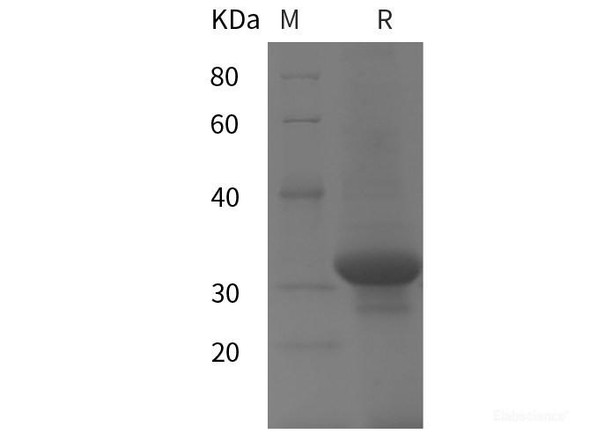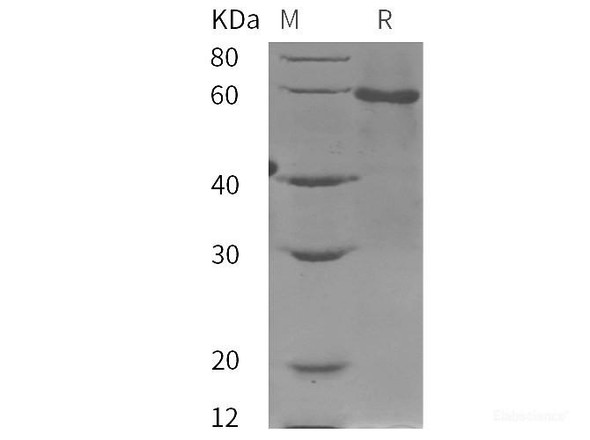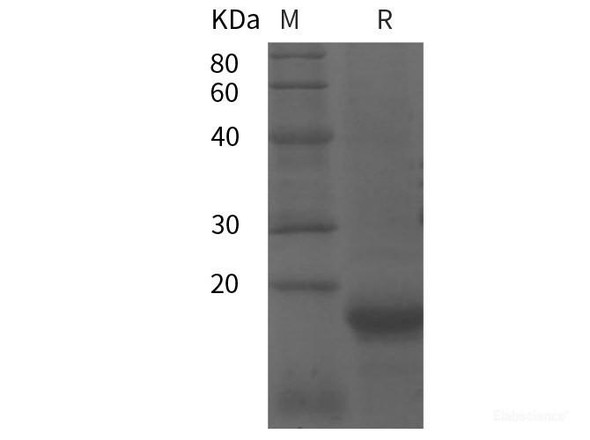Human PTPN11 Recombinant Protein (His tag)
- SKU:
- RPES5523
- Product Type:
- Recombinant Protein
- Species:
- Human
Frequently bought together:
Description
| Product Name: | Human PTPN11 Recombinant Protein (His tag) |
| Product Code: | RPES5523 |
| Size: | 20µg |
| Species: | Human |
| Expression Host: | E.coli |
| Synonyms: | BPTP3, CFC, JMML, METCDS, NS1, PTN11, PTP-1D, PTP2C, SAP2, SH-PTP2, SH-PTP3, SHP2, SHPTP2, SHPTP3, Syp |
| Mol Mass: | 57.09 kDa |
| AP Mol Mass: | 60 kDa |
| Tag: | N-His |
| Purity: | > 95 % as determined by reducing SDS-PAGE. |
| Endotoxin Level: | Please contact us for more information. |
| Bio Activity: | Testing in progress |
| Sequence: | Thr 2-Ala 521 |
| Accession: | Q06124 |
| Storage: | Generally, lyophilized proteins are stable for up to 12 months when stored at -20 to -80°C. Reconstituted protein solution can be stored at 4-8°C for 2-7 days. Aliquots of reconstituted samples are stable at < -20°C for 3 months. |
| Shipping: | This product is provided as lyophilized powder which is shipped with ice packs. |
| Formulation: | Lyophilized from sterile PBS, pH 7.4. Normally 5 % - 8 % trehalose, mannitol and 0.01% Tween80 are added as protectants before lyophilization. Please refer to the specific buffer information in the printed manual. |
| Reconstitution: | Please refer to the printed manual for detailed information. |
| Background: | SHP-2 (PTPN11) is a ubiquitously expressed, nonreceptor protein tyrosine phosphatase (PTP). It participates in signaling events downstream of receptors for growth factors, cytokines, hormones, antigens, and extracellular matrices in the control of cell growth, differentiation, migration, and death. Activation of SHP-2 and its association with Gab1 is critical for sustained Erk activation downstream of several growth factor receptors and cytokines. In addition to its role in Gab1-mediated Erk activation, SHP-2 attenuates EGF-dependent PI3 kinase activation by dephosphorylating Gab1 at p85 binding sites. SHP-2 becomes phosphorylated at Tyr542 and Tyr580 in its carboxy terminus in response to growth factor receptor activation. These phosphorylation events are thought to relieve basal inhibition and stimulate SHP-2 tyrosine phosphatase activity. Mutations in the corresponding gene result in a pair of clinically similar disorders (Noonan syndrome and LEOPARD syndrome) that may result from abnormal MAPK regulation. |










